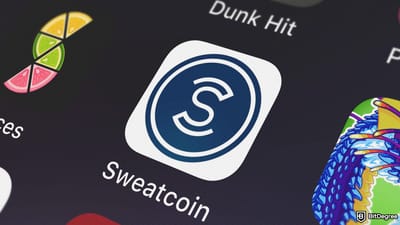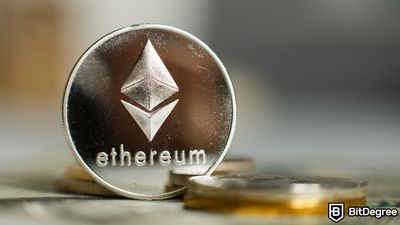Key Takeaways
- Mining cryptocurrency on phone is possible although it comes with several limitations, like potential overheating of the device and lower profits than dedicated mining rigs;
- When starting crypto mining on phone, make sure you install a mining app from a reputable source and carefully review the app's permissions to avoid granting access to sensitive data;
- While technically possible, phone mining for Bitcoin is a non-starter. The massive processing power required far exceeds a phone's capabilities.
Stop overpaying - start transferring money with Ogvio. Sign up, invite friends & grab Rewards now! 🎁
Have you ever dreamed of entering the crypto world without a hefty investment? Mining cryptocurrency on phone offers a more affordable way to get started, allowing you to participate from anywhere, anytime.
While it might not be the most efficient way, mobile mining can be a fun and accessible method to learn the ropes. So, let’s grab your device and learn why and how to mine crypto on phone with me! I’ll also answer questions like “What are the benefits of mobile mining?” or “Can you mine Bitcoin on your phone?”.
For secure storage of any cryptocurrency you mine, consider using a trusted hardware wallet like Ledger Nano X. It’s an offline device that keeps your private keys isolated from the internet, minimizing the risk of theft or hacking.

Did you know?
Subscribe - We publish new crypto explainer videos every week!
What is BNB? The Truth Behind Binance Smart Chain (Animated)


Table of Contents
- 1. What is Cryptocurrency Mining?
- 2. Can You Mine Cryptocurrencies on Your Phone?
- 2.1. Cryptocurrencies Suitable for Mobile Mining
- 3. Getting Started with Mining Cryptocurrency on Phone
- 4. Pros and Cons of Mining Cryptocurrency on Phone
- 5. Tips for Successful Mobile Mining
- 5.1. Be Aware of Security Risks
- 5.2. Optimize the Hardware and Software
- 5.3. Minimize Background Apps
- 6. Conclusions
What is Cryptocurrency Mining?
Crypto mining is the process that keeps assets like Bitcoin running smoothly, so mining cryptocurrency on phone refers to using your smartphone or tablet to participate in the activity.
Latest Deal Active Right Now:The mining process tackles two key tasks. First, it validates transactions. Imagine a giant public record book for all cryptocurrency transactions, crypto mining verifies these transactions are legit and haven't been tampered with. Second, it mints new coins. New cryptocurrencies are created through mining, similar to how new gold is extracted in traditional mining. However, instead of physical tools, miners use computational power.
By verifying transactions, mining secures the blockchain and prevents fraud. It's like having a network of auditors constantly checking the books. This activity also keeps cryptocurrencies decentralized, meaning no single entity controls the network.
One common crypto mining method is called Proof-of-Work (PoW). This approach answers the question, "How do you mine Bitcoin?" by solving complex mathematical equations with specialized computers to validate transactions and add them to the blockchain.
The first miner to solve the equation gets to validate a group of transactions, adding them to a permanent record on the blockchain. As a reward for their work, they receive a cryptocurrency. However, these complex calculations need powerful computers running constantly, resulting in a major demand for electricity.
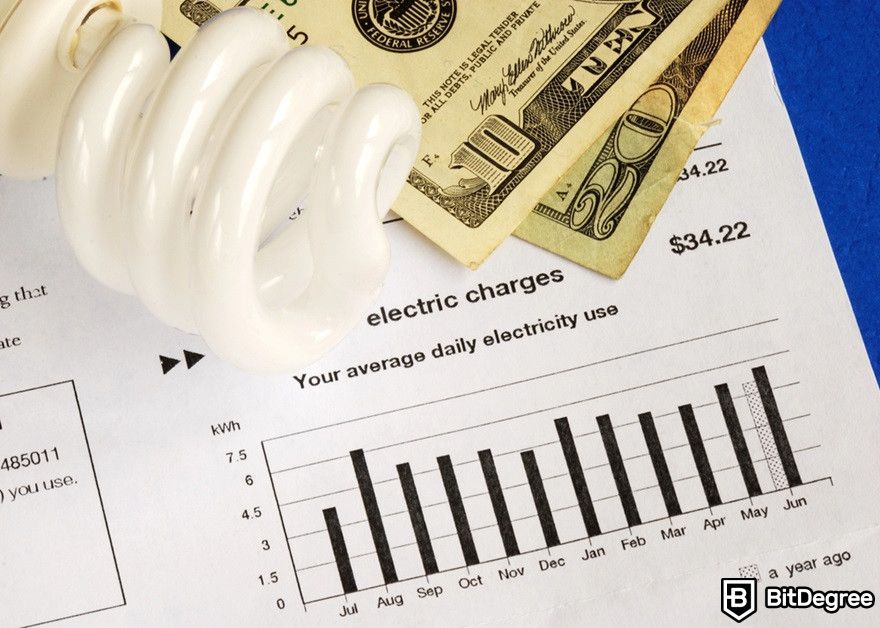
Besides high energy consumption, there are several aspects to consider when mining cryptocurrencies with PoW in general:
- Mining difficulty. This refers to the complexity of the mathematical equations miners need to solve to validate transactions. As more miners join the network, the difficulty adjusts to maintain a steady block creation rate, meaning it constantly gets harder to mine new coins and demands more powerful hardware.
- Hardware features. These include the processing unit (CPU or GPU), sufficient RAM, and cooling capacity to prevent overheating and damage to your hardware, like fan size and heatsinks.
- Cryptocurrency price fluctuation. The value of cryptocurrencies can fluctuate wildly. What might seem profitable today can become a money loser if the price drops before you can sell your mined coins.
- Coin availability. Not all cryptocurrencies are available for mining by individuals. Some use alternative validation methods like Proof-of-Stake (PoS) that don't need extensive computational power.
- Technical expertise. Mining cryptocurrency on phone or other devices needs specific skills, such as hardware selection and setup, software management, and pool selection. If you choose solo mining, you need a high level of technical expertise as you handle everything yourself.
While PoW is quite dominant, there are alternative methods to create new blocks and secure the blockchain like Proof-of-Stake (PoS). Instead of mining and using heavy computational power, PoS lets users who hold a certain amount of cryptocurrency within the network (known as staking) be chosen to validate transactions and create new blocks.
In PoS, transaction validation depends on how many cryptocurrencies a user owns. The more coins a user has staked (committed to the network), the greater chance they have of being chosen to validate transactions and earn rewards. This approach uses much less energy compared to Proof-of-Work.
Can You Mine Cryptocurrencies on Your Phone?
Technically, yes, mining cryptocurrency on phone is possible with certain apps. Still, note that this activity may not cover all cryptos because most rely on complex algorithms that need far more processing power than a phone can offer.
Moreover, some cryptocurrencies use mining algorithms designed for specialized hardware and are not suitable for mobile devices. These algorithms can be too complex for a phone to handle or require specific features absent on phones.
For example, validating transactions for Bitcoin needs very powerful computers[1]. Regular devices like phones or laptops are less likely to do this process effectively and may translate to high electricity bills.

With such complexity, many people wonder, "How do you mine Bitcoin and get profits?". To answer this question, it's important to understand the immense resources required.
Mining a single BTC on your own needs an average of 266,000 kilowatt-hours (kWh) of electricity, which is equivalent to the amount of power used by an average household for over seven years. In comparison, an average US household typically consumes 29 or 30kWh daily of electricity or 870 or 900kWh monthly.
Therefore, although it's possible to mine some assets on a phone or tablet, mining cryptocurrencies with complex algorithms like Bitcoin on these small devices is not practical. The main reason is that you need a huge processing power to solve the complex mathematical problems involved in mining.
Make sure you understand which cryptocurrencies are suitable for mobile mining and prioritize your phone's health by monitoring battery life and temperature.
Cryptocurrencies Suitable for Mobile Mining
While Bitcoin mining requires "serious" hardware, can you mine crypto on a phone for other digital currencies? Yes! Well, although the options for mining cryptocurrency on phone are quite limited, these can be a good introduction to the world of crypto mining and how it works.
Several privacy-focused coins, for example, are considered more mobile-friendly compared to Bitcoin's SHA-256 because they use different algorithms that can be broken down into smaller, more manageable tasks. These smaller tasks are better suited for the processing power of a smartphone's CPU.
The privacy-focused coins that are suitable for crypto mining on phone include:
- Monero (XMR). Known for its strong privacy features, Monero's mining algorithm (RandomX) is designed to be CPU-friendly, making it relatively efficient for mobile mining.
- Bytecoin (BCN). This uses the CryptoNight algorithm, which is CPU-friendly and can be efficiently mined on mobile devices.
- Aeon (AEON). Aeon is a lightweight cryptocurrency that uses a variant of the CryptoNight algorithm, making it well-suited for mining cryptocurrrency on phone.
- Uplexa (UPX). Uplexa focuses on the Internet of Things (IoT) devices and mobile mining, aiming to provide efficient mining on low-power devices.
Besides privacy-focused, newer or less established cryptocurrencies may also be your option to mine crypto on phone.
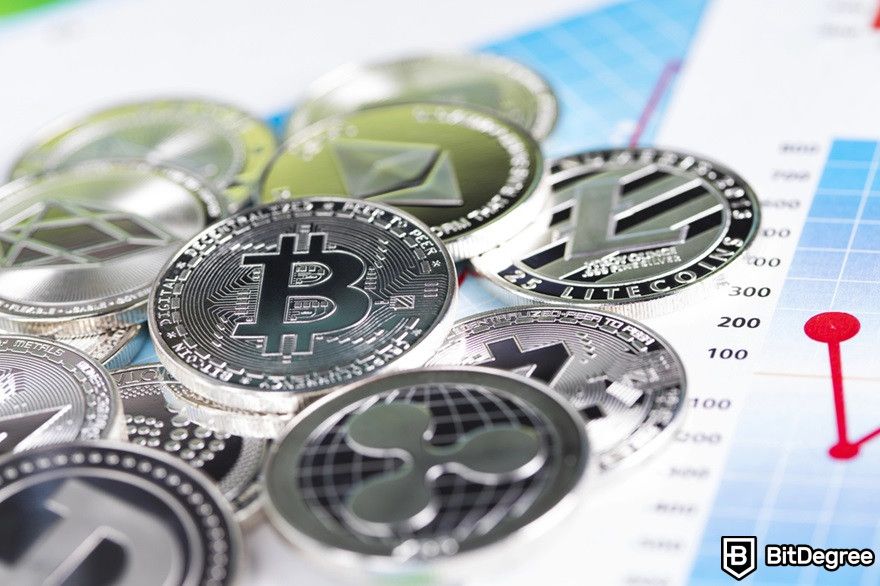
Many newer coins use algorithms designed for broader accessibility, potentially allowing mobile devices to contribute to the mining process. However, these coins often have lower trading volumes and values, making them less profitable for mining cryptocurrency on phone. Some examples of these mobile-mineable cryptocurrencies are:
- Electroneum (ETN). Specifically designed for mobile mining, users can mine ETN through its dedicated mobile app, making the process straightforward and accessible. It uses the Proof of Responsibility (PoR) algorithm that rewards responsible behavior, making it more feasible to mine on phones than PoW.
- Pi Network (PI). With the Stellar Consensus Protocol (SCP) algorithm, this crypto aims to create a user-friendly mining experience on mobile devices. It allows users to mine Pi cryptocurrency without draining resources, as the mining process happens in the background.
- VerusCoin (VRSC). VerusCoin’s mining algorithm, VerusHash 2.0, is optimized for multiple devices, including phones, providing an accessible entry point for mobile miners.
- MobileCoin (MOB). Using the same algorithm as Pi Network, this crypto is designed with mobile devices in mind. MobileCoin focuses on providing fast, secure transactions with low resource requirements, making it suitable for crypto mining on phone.
Other than those mentioned coins, a few cloud mining services also offer mobile apps that allow users to remotely participate in mining pools. While these can be convenient, carefully research the service's reputation, fees, and potential risks before mining.
So, if you ask, "Can you mine Bitcoin on phone?" You can, but it’s not an efficient way to do so. A mobile phone is less likely to have the power to compete with dedicated mining rigs, and the rewards will be negligible.
Getting Started with Mining Cryptocurrency on Phone
So, technically, mining cryptocurrency on phone is possible, but it needs a different approach for any real effectiveness.
You can follow this step-by-step guide to mine crypto on phone:
Step 1: Choose the right phone and a mining app.
While crypto mining on phone inherently comes with limitations, you can try to maximize the results by carefully choosing the phone and mining app.
Look for a phone with a powerful processor (CPU) and decent graphics processing unit (GPU). While the best mining rigs have specialized ASIC chips, a powerful phone CPU can still contribute to some mining algorithms.
Then, choose a phone with a large battery capacity to minimize the number of charging cycles needed. Consider using power banks for longer mining, but remember to account for the electricity consumption and potential impact on your profits.

Also, keep in mind that mining generates heat. Phones with good heat management systems (like heat sinks or liquid cooling for high-end phones) may be a good initial investment for extended mining periods.
After you get a phone, carefully search for a secure and reputable mobile mining app to ensure you have a good experience. Also, pick an app with a user-friendly interface that allows you to easily monitor performance, adjust settings, and understand how much you're earning.
My recommendation is to choose a mining app that prioritizes mobile phone compatibility, like Electroneum. Its dedicated mobile mining app allows users to mine ETN directly from their smartphones.
One of Electroneum's key features is cloud mining. This means the actual mining operations are handled by Electroneum’s servers rather than the phone’s hardware. The app simulates the mining experience, making it possible to mine ETN on devices with limited processing power.
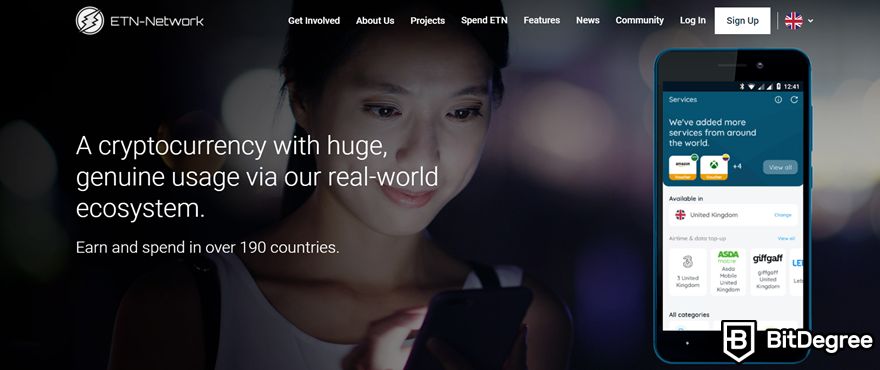
Users can earn small amounts of ETN by participating in the mobile mining process. The rewards are typically lower than those from traditional mining but provide an accessible way to get involved in cryptocurrencies without a huge investment.
Moreover, the app has a built-in wallet. This feature enables users to send, receive, and manage their Electroneum directly from the app. You can also make instant payments through its app, helping users spend their ETN on everyday purchases.
Overall, in my opinion, Electroneum's mobile mining app stands out for beginners and casual users. It offers an innovative way to explore the world of digital currencies effortlessly, all without needing expensive equipment or deep technical knowledge.
Step 2: Install and set up the app.
Whatever mining app you end up downloading, ensure it's compatible with your phone's operating system (Android or iOS). One way to make sure of this is to download from reputable app stores like Google Play Store or Apple App Store. These stores have vetting processes in place to help minimize the risk of malware and ensure a baseline level of security.
Don't forget to read reviews and research the app's developer to make sure of the quality. Look for positive user experiences and a good reputation to avoid scams or apps that drain your battery excessively.
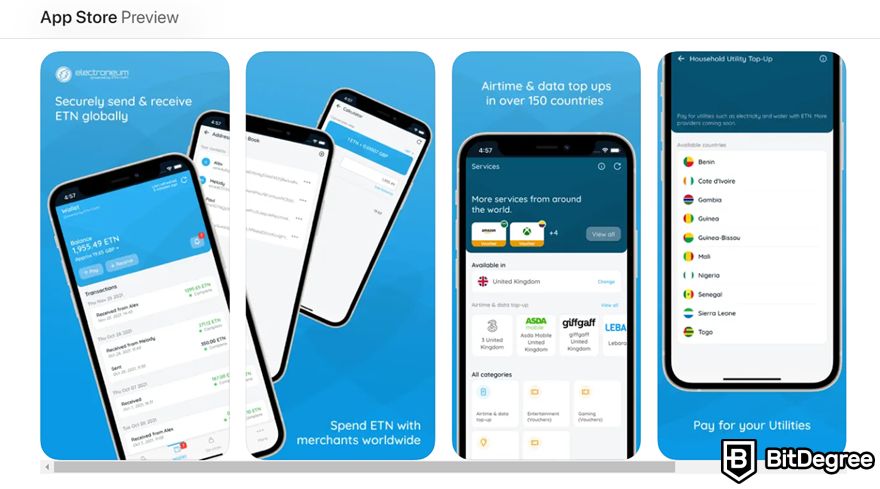
After you finish downloading it, install the app following the instructions provided by the app. Be mindful of any permissions the app requests. Only grant access to features essential for mining, like internet access or battery optimization.
Some mining apps may require you to create an account. This is usually a straightforward process involving entering your email address and setting a password.
Step 3: Configure mining settings.
Once installed, open an app and explore its settings to familiarize yourself with the interface and available options. At this step, you may be able to adjust mining intensity. This setting often determines how much processing power your phone dedicates to mining.
The app may also let you choose the cryptocurrency to mine. If it supports mining multiple cryptocurrencies, you may be able to pick which one to mine. This typically depends on factors like the coin's current value, trading volume, and phone compatibility.
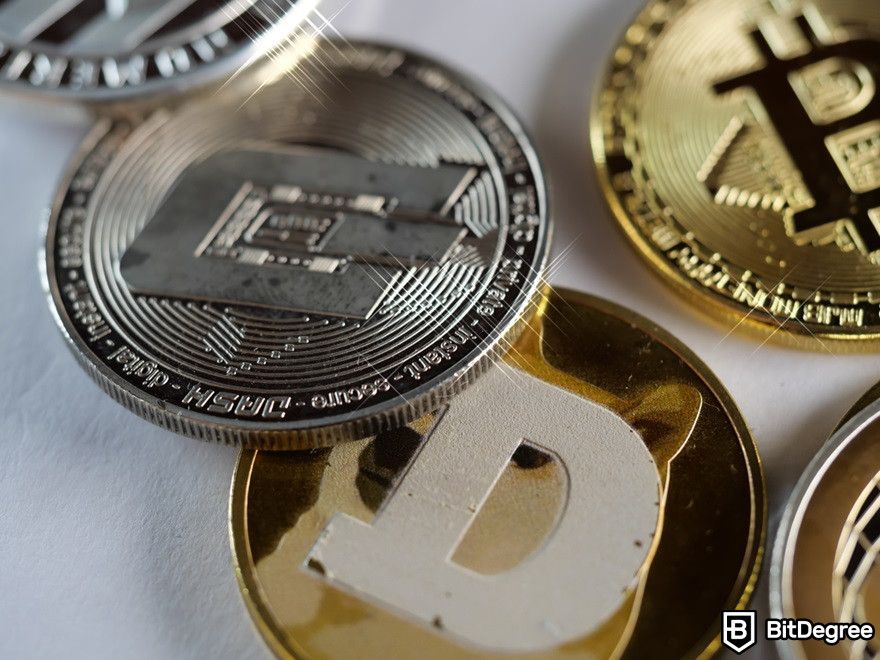
Then, consider setting up notifications. Configure notifications to receive updates on your mining progress, potential earnings, or important app messages.
Adjusting these settings helps personalize your mobile mining experience to maximize efficiency based on your phone's limitations. Don't be shy to experiment to find the sweet spot for you!
Step 4: Start mining and monitor the progress.
Once you're comfortable with the settings, locate the "Start Mining" button or similar function within the app to initiate the mining process. Remember, mobile mining is primarily an educational experience. It's okay to take the steps slowly and enjoy the learning process.
If you get stuck, don't hesitate to reach out to the app's support team or hop on a crypto forum! There's a whole community of crypto enthusiasts out there happy to help you on your mining journey.
After mining for a while, take a moment to explore the app's performance metrics. These metrics, often displayed on a dashboard or overview screen, provide valuable insights into your mining activity and potentially tweak settings to optimize its performance. I suggest you keep an eye on the hash rate and estimated earnings.
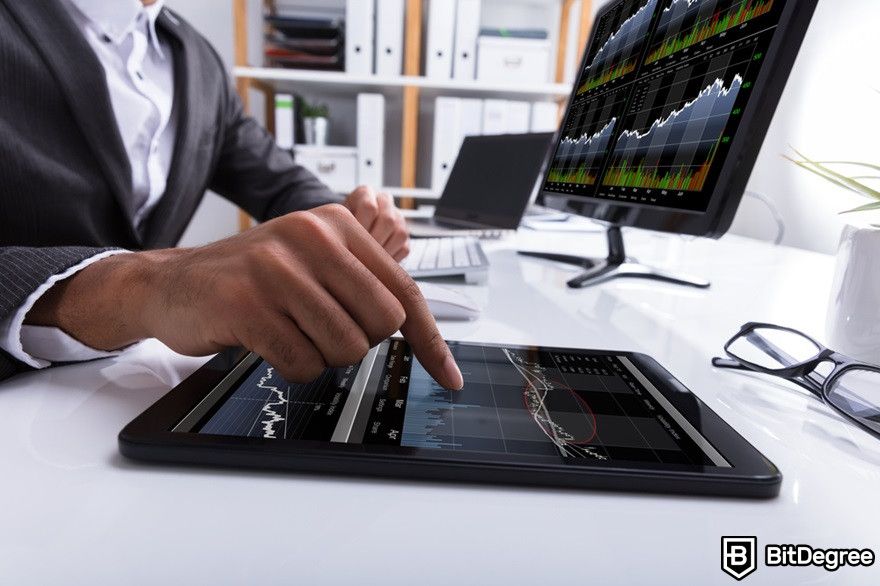
The hash rate indicates the number of calculations your phone's processor can perform per second while mining. A higher hash rate suggests faster mining speeds.
Meanwhile, estimated earnings means the amount of cryptocurrency you earn over a certain period. Be cautious with these estimates, as they can be highly variable and influenced by various factors, like network difficulty, mining pool performance, and fluctuating cryptocurrency prices.
Step 5: Withdraw earnings.
Most mining apps and cryptocurrency exchanges, like Binance and Kraken, have a minimum withdrawal threshold to convert your earned assets to another crypto or fiat currency. This means you need to accumulate a certain amount before you can transfer your holdings out of the app or exchange.
Therefore, check the minimum withdrawal threshold on the website or app or contact the support center if you can't find the information. Knowing this helps make sure the threshold is achievable for your mobile mining goals.

Also, note that withdrawing cryptocurrencies often incurs transaction fees. These fees can vary depending on the network and the specific app you're using and are paid to miners on the blockchain network to process your withdrawal request.
However, can you mine crypto on a phone and not pay the withdrawal fee? Well, some mobile mining apps offer ways to use the mined assets directly within their ecosystem, so you don’t have to withdraw them and pay the fee. Explore if the app allows you to spend your earnings on in-app purchases or services.
Pros and Cons of Mining Cryptocurrency on Phone
Mining cryptocurrency on phone may have gained traction, but it's important to understand the pros and cons before diving in.
Pros
- Accessibility. Anyone with a smartphone can potentially start crypto mining on phone. No expensive hardware or technical expertise is required although some basic understanding helps.
- Low investment. The initial investment is minimal, as you only need a smartphone, internet connection, and the mining app itself which may be free or have a low cost.
- Learning experience. Mobile mining can be a great way to learn about cryptocurrency mining and blockchain technology in a practical way.
- Potential passive income. While profitability is low, some view mobile mining as a way to earn a small amount of cryptocurrency passively, even while your phone is idle.
Cons
- Low profitability. Since smartphones have far less processing power than dedicated mining rigs, you likely only earn minimal amounts of cryptocurrency.
- Battery drain. Mining is demanding on a phone's battery, leading to faster depletion and potentially reducing its lifespan.
- Heat generation. Mining can generate heat, which can damage a phone's internal components if not managed properly.
- Limited coin options. Most profitable algorithms are not suitable for mobile phones, restricting you to mining less established coins with lower value.
Overall, mobile mining offers easy access to the world of cryptocurrency, but many limitations exist.
If you're curious about cryptocurrencies and want to learn by doing, just go on because mobile mining can be a good starting point. However, note that you have to keep the expectations realistic and prioritize protecting your phone and data.
Tips for Successful Mobile Mining
Here are some tips to help you get the most out of mining cryptocurrency on phone, focusing on maximizing performance while minimizing risks to your phone and data.
Be Aware of Security Risks
As I've mentioned in the previous section, always download the mining app from trusted sources, such as Google Play, App Store, or the app’s official website. Also, ensure that you research the app's reputation and the developer’s background before installing.
Getting them from unreliable places is a recipe for disaster. These apps may be disguised as legitimate mining tools but can actually be malware.
Malicious apps can steal your cryptocurrency holdings and personal data like login credentials, or even infect your phone with other malware that compromises the entire device.

Moreover, be careful about fake apps out there. Some apps mask as mining tools but do nothing more than drain your battery or display fake earnings. These are essentially scams that exploit your interest in mobile mining.
Besides malicious and fake apps, mobile miners are also susceptible to phishing attacks. Phishing scams can target mobile miners through emails or SMS messages that appear to be from legitimate mining pools or exchanges. These messages may trick you into revealing your login credentials (username and password) for these platforms or clicking on malicious links that download malware onto your phone.
So, how can you mine crypto on a phone without falling victim to scams? A rule of thumb is to never click on suspicious links or attachments in emails or SMS messages, even if they seem to be from a familiar source. Be cautious of any unsolicited communication requesting your login credentials!
I also suggest that you avoid using public Wi-Fi to mine crypto on phone. Free Wi-Fi sounds great, but using public hotspots can be risky[2]. This is because, unlike your mobile data plan, public Wi-Fi isn't always secure. Anyone else on the same network can potentially see the information you send and receive online.
Optimize the Hardware and Software
To start mining cryptocurrency on phone effectively, consider using a different phone specifically for mining. This allows you to dedicate processing power without hindering the primary phone's performance and battery life.
Still, always monitor the temperature and take breaks when necessary because a secondary phone can overheat as well.
Also, explore passive cooling solutions like phone stands with built-in fans. However, be cautious of using aggressive cooling methods that may damage your phone's internal components.
Besides cooling your phone, you need to focus on optimizing battery management. I suggest that you keep your phone plugged in while mining to avoid rapid battery drain. Consider using a power bank for extended sessions.
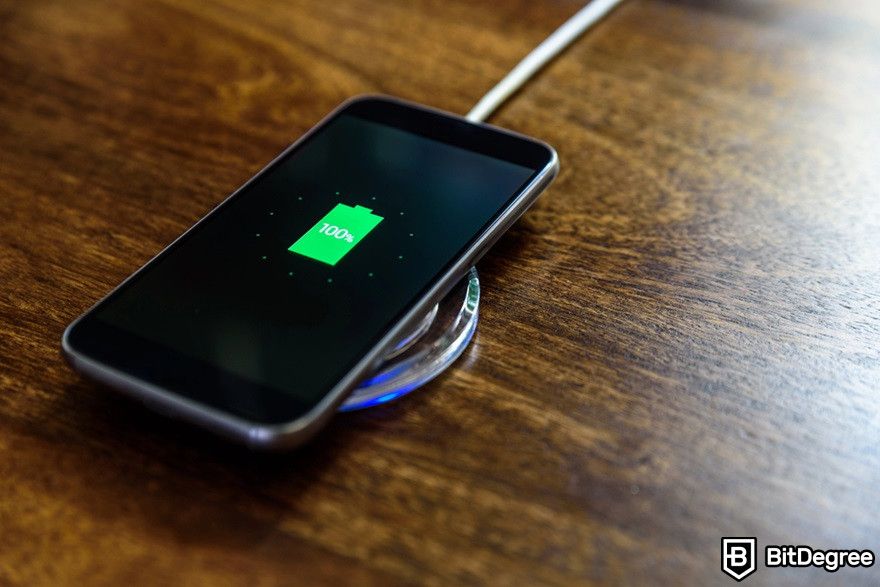
While not directly impacting mining performance, maintaining an updated operating system is also important. It ensures your phone has the latest security patches.
Phone manufacturers regularly release updates to their operating systems that address security vulnerabilities discovered by their researchers. These vulnerabilities are like cracks in a phone's defenses that hackers can exploit to steal data, install malware, or take control of a device.
Therefore, enable automatic updates whenever possible. This ensures you're always protected by the latest security patches without having to manually check and install them. If automatic updates aren't available, set a reminder to check for updates regularly and install them promptly.

- Secure and reliable
- Accepts fiat currencies
- Lots of trading options
- Reputable exchange
- Accepts fiat currencies
- Offers various trading options

- Huge trading variety
- Regulation-compliant around the globe
- Fair trading fees
- Beginner-friendly
- A wide array of features
- Vast number of different crypto coins & tokens

- Beginner-friendly
- Secure
- Decent trading and withdrawal fees
- Crypto.com Visa Card
- Automated tools & bots
- Ecosystem synergy with CRO
Minimize Background Apps
Mobile mining relies on your phone's processing power, and background apps can eat into those resources. The apps can consume processing power (CPU and GPU) and drain the battery in the background even if you're not actively using them.
Closing the background apps frees up those resources for the mining app, potentially leading to a faster hash rate. A higher hash rate translates to the ability to solve more mathematical equations per second, which could contribute to slightly faster mining speeds. It can also result in a more efficient mining cryptocurrency on phone.
In short, dedicating more processing power to mining may help you get better results with the same amount of time and energy used, instead of sharing the power with background apps.
Depending on the operating system, you only need to swipe up on the preview window of recently opened apps to terminate the background processes.
Conclusions
So, can you mine crypto on a phone? The short answer is yes. Mining cryptocurrency on phone is possible, and it offers a taste of the cryptocurrency world without a hefty investment. Just remember not to expect significant earnings and extensive access to many established cryptocurrencies. Also, weigh the pros and cons mentioned above before starting your journey.
If you're curious about cryptocurrencies and want to experiment, mobile mining can be a starting point. However, for those seeking substantial earnings, alternative methods offered by platforms like Binance may be a better fit.
Binance Earn, for example, offers a variety of options to grow your existing cryptocurrency holdings. You can earn interest in crypto through staking or savings products, potentially generating a more reliable return compared to mobile mining. This option helps you get the benefit from the market's growth without the risks associated with crypto mining on phone.
The content published on this website is not aimed to give any kind of financial, investment, trading, or any other form of advice. BitDegree.org does not endorse or suggest you to buy, sell or hold any kind of cryptocurrency. Before making financial investment decisions, do consult your financial advisor.
Scientific References
1. M. Caprolu, S. Raponi, G. Oligeri, et al.: ‘Cryptomining makes noise: Detecting cryptojacking via Machine Learning’;
2. M. Sangeen, N. A. Bhatti, K. Kifayat, et al.: ‘Blind-trust: Raising awareness of the dangers of using unsecured public Wi-Fi networks’.


